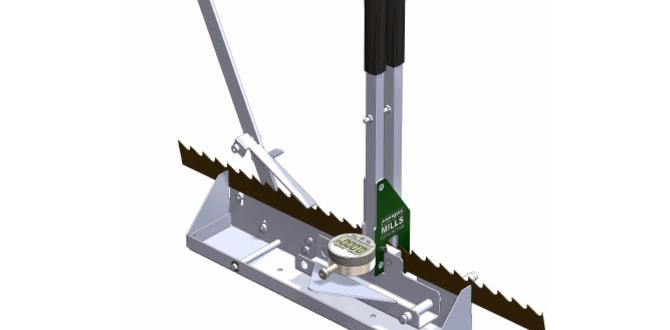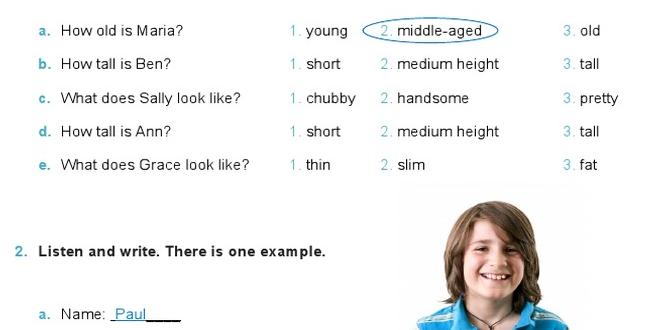Have you ever wondered why some bandsaw blades have different tooth patterns? It’s a simple question that opens up a fascinating world of woodworking. Just like how you choose the right shoes for a race, selecting the right tooth pattern can make a big difference in your projects.
Different patterns work better on different materials. For example, some blades are perfect for cutting wood, while others excel at metal. Did you know that a blade with fine teeth can create smoother cuts? It’s true! But why is that important? Smoother cuts mean you spend less time sanding and more time enjoying your project.
Understanding bandsaw blade tooth patterns can help you become a better woodworker. Imagine finishing a project faster and with a professional touch. Isn’t that something every maker dreams of?
In this article, we will dive into the world of bandsaw blade tooth patterns. You will learn how to choose the best blade for your needs. Get ready to discover tips and tricks that will take your woodworking skills to the next level!
Table of Contents
Understanding Bandsaw Blade Tooth Patterns For Optimal Cuts

Bandsaw Blade Tooth Patterns
Understanding bandsaw blade tooth patterns is key to successful woodworking. Each pattern serves a unique purpose. For example, hook tooth patterns cut faster but leave a rougher finish. Flat tooth patterns provide smoother cuts. Choosing the right pattern affects your project’s quality. Did you know that selecting the wrong blade can ruin your work? The tooth pattern determines how the blade interacts with the material. Always consider the type of wood you are cutting. A well-chosen blade makes all the difference!
Understanding Bandsaw Blade Tooth Patterns
Definition of bandsaw blade tooth patterns. Importance of tooth patterns in cutting efficiency.
Bandsaw blade tooth patterns define how the teeth on the blade are arranged. This arrangement is important for how well the blade cuts through materials. Different patterns help with various tasks, like slicing wood or metal. For example, wider teeth are great for fast cuts, while finer teeth are perfect for detailed work. Choosing the right pattern boosts cutting efficiency. Remember, it’s like picking the right pair of shoes for a marathon or a dance party!
| Tooth Pattern | Best Use |
|---|---|
| Wide Teeth | Fast Cuts |
| Fine Teeth | Detailed Work |
| Variable Teeth | Versatile Cutting |
Factors to Consider When Choosing Tooth Patterns
Material being cut and its thickness. Desired finish quality and cutting speed.
Choosing the right tooth pattern for your bandsaw blade depends on a few important factors. First, consider the material being cut and its thickness. Different materials need different teeth. Thicker materials require a blade with fewer teeth for faster cuts. Second, think about the desired finish quality and cutting speed. A finer tooth pattern gives a smooth finish but cuts slower. A coarser pattern cuts fast but may leave rough edges.
What should I consider when choosing tooth patterns?
Material type, thickness, finish quality, and cutting speed all affect tooth selection. Each choice impacts how well the job goes.
Factors to Remember
- Material: Wood, metal, or plastic can change tooth needs.
- Thickness: Thicker materials need fewer teeth.
- Finish Quality: Smooth finishes mean more teeth.
- Cutting Speed: Faster cuts may need a coarser pattern.
Tooth Count and Its Impact on Performance
Explanation of tooth count and its relation to cut quality. Recommendations based on specific cutting tasks.
The number of teeth on a bandsaw blade greatly affects how well it cuts. More teeth provide smoother cuts, making them ideal for fine work. Fewer teeth cut faster but may leave rough edges. For example, use blades with:
- 3-4 teeth per inch for rough cutting
- 10-14 teeth per inch for general cutting
- 14-24 teeth per inch for fine finishes
Choosing the right tooth count helps you get the cut quality you need for your project. This can save time and give you better results.
How does tooth count affect cut quality?
A higher tooth count leads to a smoother finish. Conversely, a lower tooth count is better for quick cuts. Pick wisely based on your task!
Common Mistakes to Avoid with Tooth Patterns
Misidentifying the right pattern for the material. Neglecting maintenance and care of blades.
Choosing the wrong tooth pattern for your material can be like trying to eat soup with a fork—frustrating and messy! It’s crucial to match the tooth pattern with the material type. Ignoring blade care is another big blunder. A dirty or dull blade is like bringing a sleepy snail to a race—not very effective! Keep your blades clean and sharp. Remember, a little maintenance goes a long way!
| Common Mistakes | How to Avoid Them |
|---|---|
| Misidentifying tooth patterns | Always check material type before choosing! |
| Neglecting blade maintenance | Regularly clean and sharpen blades! |
Best Practices for Using Bandsaw Blades
Tips for installation and setup to optimize performance. Adjusting feed rate and tension for different tooth patterns.
Installing a bandsaw blade correctly is key to getting the best cuts. Start by making sure the blade is properly aligned and tightened. This helps avoid unwanted wobbles. Different tooth patterns eat through materials like popcorn at a movie theater, but adjusting the feed rate can help. For instance, slow and steady works well for fine cuts, while faster speeds are great for thicker materials. Don’t forget to check the tension! A bit too tight can ruin your day. Here’s a quick table to remember:
| Tooth Pattern | Feed Rate | Tension |
|---|---|---|
| Fine Teeth | Slow | Medium |
| Wide Teeth | Fast | High |
Remember, a well-set blade is your best buddy on the cutting journey. With these tips, you’ll slice through your projects like a hot knife through butter!
Maintaining and Caring for Bandsaw Blades
Cleaning and storage recommendations. Signs that indicate it’s time for a new blade or resharpening.
Keeping your bandsaw blades in great shape helps them cut like a hot knife through butter! To clean them, simply wipe off debris with a damp cloth and dry them well. Storing blades properly is crucial; a cool, dry place will do wonders. Look out for rust or missing teeth—those are clear signs it’s time for a new blade or a good sharpening. Remember, dull blades can be as annoying as a mosquito at a picnic!
| Signs | Action |
|---|---|
| Rust | Replace |
| Missing Teeth | Replace |
| Dullness | Resharpen |
Future Trends in Bandsaw Blade Technology
Innovations in tooth design and materials. Predictions for the evolution of bandsaw blade performance.
Exciting changes are coming for bandsaw blades! Designers are working on fancy new tooth shapes and using cool materials that last longer. Imagine a blade that cuts through wood like butter! Predictions say these improvements will make bandsaw blades even sharper and more durable. With better performances on the horizon, future projects will be easier. Who wouldn’t want a blade that cuts faster and smoother? After all, less time cutting means more time for snacks!
| Innovation | Description |
|---|---|
| Tooth Shape | New designs for quicker cuts |
| Materials | Stronger and longer-lasting options |
| Performance | Smoother cuts with less effort |
Conclusion
In summary, bandsaw blade tooth patterns are crucial for cutting successfully. They determine how smooth or fast your cuts will be. Remember to choose a pattern based on your material and project. Explore different options to find what works best for you. For more tips, check out more articles or guides on bandsaw blades to improve your skills!
FAQs
What Are The Different Tooth Patterns Available For Bandsaw Blades, And How Do Their Designs Influence Cutting Performance?
Bandsaw blades have different tooth patterns like regular, skip, and hook. Regular teeth are good for smooth cuts. Skip teeth are wider apart and help cut thick materials faster. Hook teeth have a curve that helps in cutting hard stuff quickly. Choosing the right pattern helps us cut better and faster.
How Does The Tooth Spacing On A Bandsaw Blade Affect The Type Of Material Being Cut?
The spacing between teeth on a bandsaw blade is important for cutting different materials. If the teeth are close together, the blade can cut soft materials, like wood, smoothly. If the teeth are far apart, the blade is better for cutting hard materials, like metal. You need to choose the right spacing for the material you want to cut. This helps the bandsaw work well and last longer.
What Factors Should Be Considered When Selecting A Tooth Pattern For A Specific Bandsaw Application?
When picking a tooth pattern for a bandsaw, think about what you’re cutting. You should know the material, like wood or metal. Different materials need different teeth to cut well. Also, consider how thick the material is; thicker materials need stronger teeth. Finally, think about how smooth you want the cut to be.
How Do Variable Pitch Tooth Patterns Enhance The Versatility Of Bandsaw Blades Compared To Fixed Tooth Patterns?
Variable pitch tooth patterns have teeth that are spaced differently. This helps the bandsaw cut various materials easily. You can cut thicker woods or thin metals without changing blades. Fixed tooth patterns have evenly spaced teeth, which are not as flexible. So, with variable pitch, you get better results on many types of materials!
What Maintenance Practices Can Help Preserve The Sharpness And Effectiveness Of Different Bandsaw Blade Tooth Patterns Over Time?
To keep bandsaw blades sharp, you should clean them regularly. Remove any dust or sticky stuff after each use. You can also check the blade for damage and make sure it’s tight. Be sure to use the right speed for the material you are cutting. Lastly, you can store blades flat to prevent bending and dulling.





